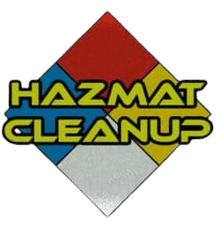Important information about the mrsa infection ***Courtesy of Mayoclinic.org***
Most MRSA infections occur in people who’ve been in hospitals or other health care settings, such as nursing homes and dialysis centers. When it occurs in these settings, it’s known as health care-associated MRSA (HA-MRSA). HA-MRSA infections typically are associated with invasive procedures or devices, such as surgeries, intravenous tubing or artificial joints.
Another type of MRSA infection has occurred in the wider community — among healthy people. This form, community-associated MRSA (CA-MRSA), often begins as a painful skin boil. It’s spread by skin-to-skin contact. At-risk populations include groups such as high school wrestlers, child care workers and people who live in crowded conditions.
Symptoms
Staph skin infections, including MRSA, generally start as swollen, painful red bumps that might resemble pimples or spider bites. The affected area might be:
Warm to the touch
Full of pus or other drainage
Accompanied by a fever
These can quickly turn into deep, painful abscesses that require surgical draining. Sometimes the bacteria remain confined to the skin. But they can also burrow deep into the body, causing potentially life-threatening infections in bones, joints, surgical wounds, the bloodstream, heart valves and lungs.
When to see a doctor
Request an Appointment at Mayo Clinic
Causes
Different varieties of Staphylococcus aureus bacteria, commonly called “staph,” exist. Staph bacteria are normally found on the skin or in the nose of about one-third of the population. The bacteria are generally harmless unless they enter the body through a cut or other wound, and even then they usually cause only minor skin problems in healthy people.
According to the Centers for Disease Control and Prevention, around 2 percent of the population chronically carries the type of staph bacteria known as MRSA.
Antibiotic resistance
Risk factors
Risk factors for HA-MRSA
Having an invasive medical device. Medical tubing — such as intravenous lines or urinary catheters — can provide a pathway for MRSA to travel into your body.
Residing in a long-term care facility. MRSA is prevalent in nursing homes. Carriers of MRSA have the ability to spread it, even if they’re not sick themselves.
Risk factors for CA-MRSA
Living in crowded or unsanitary conditions. Outbreaks of MRSA have occurred in military training camps, child care centers and jails.
Men having sex with men. Homosexual men have a higher risk of developing MRSA infections.
Using intravenous drugs. People who inject drugs are an estimated 16.3 times more likely to develop invasive MRSA infections than others.
Complications
MRSA infections may affect your:
Bloodstream
Lungs
Heart
Bones
Joints
Prevention
In the hospital, people who are infected or colonized with MRSA often are placed in contact precautions as a measure to prevent the spread of MRSA. Visitors and health care workers caring for people in isolation may be required to wear protective garments and must follow strict hand hygiene procedures. Contaminated surfaces and laundry items should be properly disinfected.
Preventing CA-MRSA
Keep wounds covered. Keep cuts and abrasions clean and covered with sterile, dry bandages until they heal. The pus from infected sores may contain MRSA, and keeping wounds covered will help prevent the bacteria from spreading.
Keep personal items personal. Avoid sharing personal items such as towels, sheets, razors, clothing and athletic equipment. MRSA spreads on contaminated objects as well as through direct contact.
Shower after athletic games or practices. Shower immediately after each game or practice. Use soap and water. Don’t share towels.
Sanitize linens. If you have a cut or sore, wash towels and bed linens in a washing machine set to the hottest water setting (with added bleach, if possible) and dry them in a hot dryer. Wash gym and athletic clothes after each wearing.
Don’t inject illicit drugs. Intravenous drug users are at risk of many types of dangerous infections, including MRSA, human immunodeficiency virus (HIV) and hepatitis C.
Thank you for the valuable information mayoclinic!
